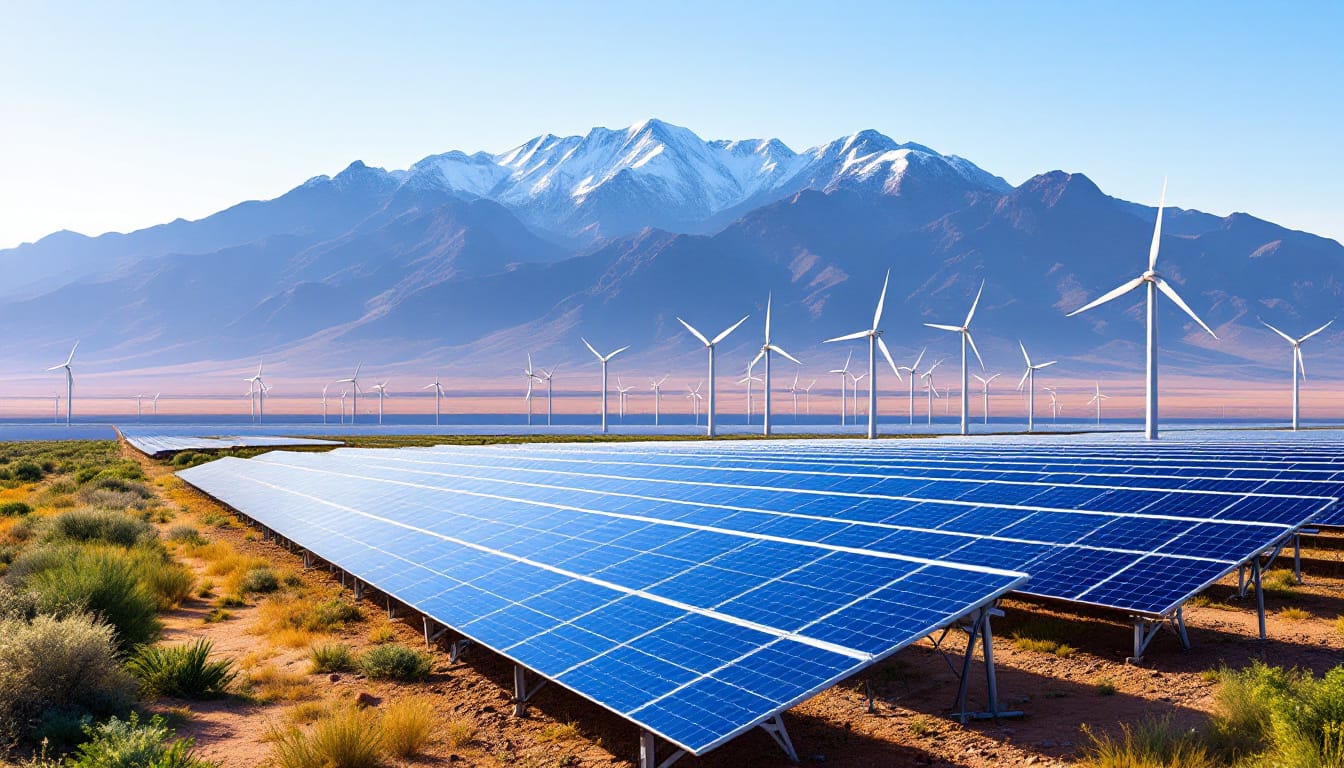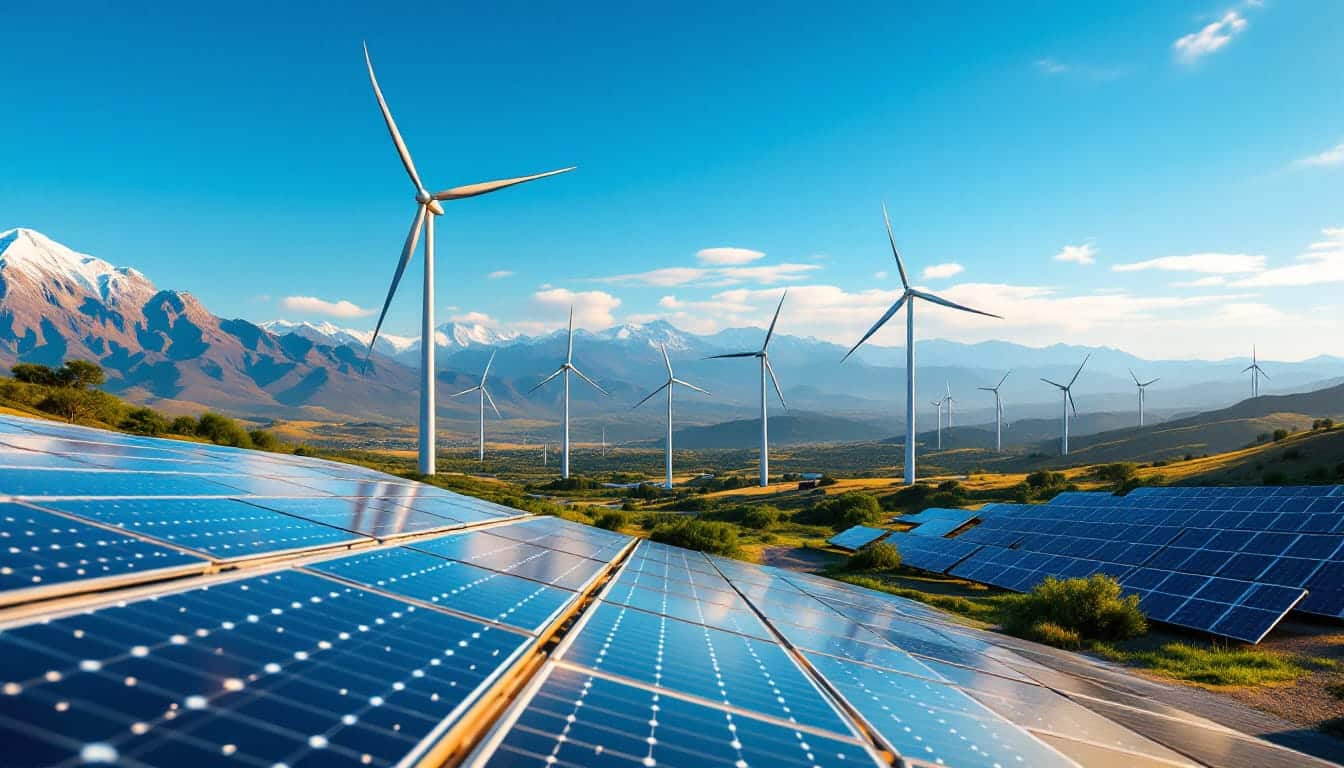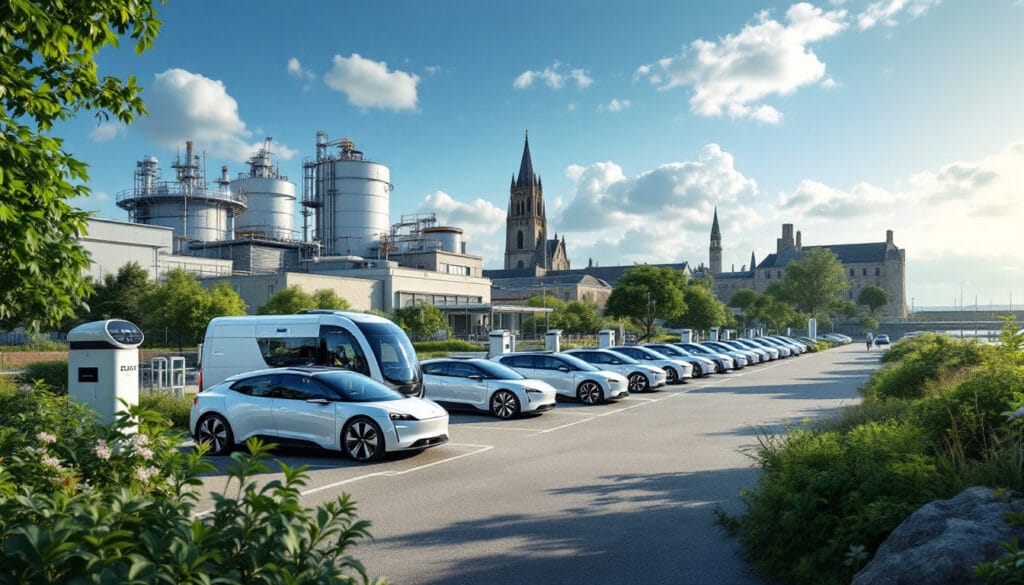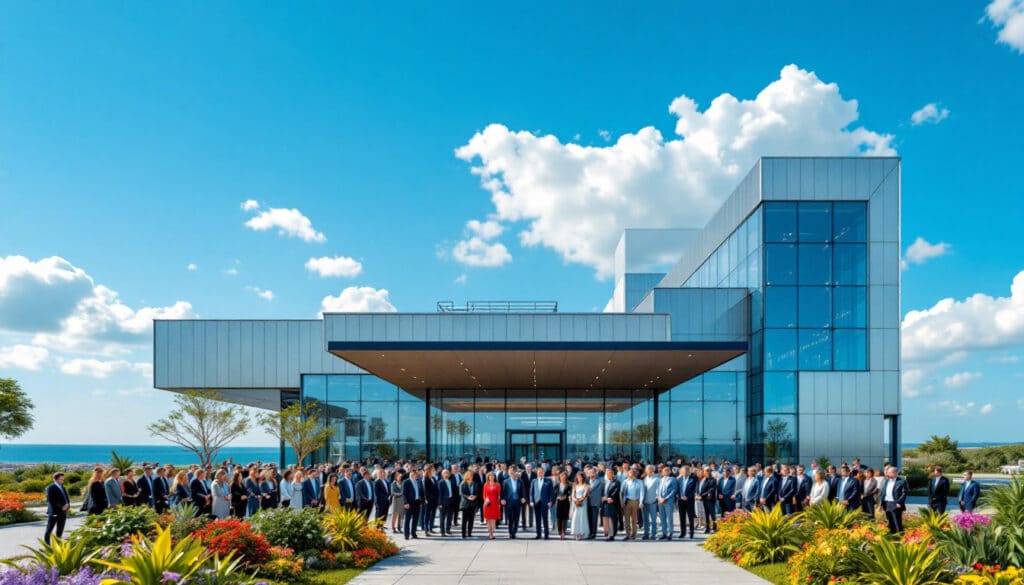Welcome to the era of digital transformation where every online interaction is scrutinized with precision.Automated systems ensure the security of your user experience.However, this vigilance can sometimes misinterpret legitimate activity as that of a robot.
In the face of these challenges, it is essential to understand how to optimize your connection without compromising the smoothness of your browsing. If you are using an anonymous proxy, consider disabling it to restore seamless access. If the error persists, do not hesitate to contact customer service by providing your unique incident number. In the meantime, you can continue your exploration by validating your humanity via the option “I am human”.

Table des matières
Toggleedf in chile: a new chapter for renewable energy
EDF, a global leader in the electricity sector, is intensifying its presence in Chile with an ambitious project that merges wind and solar energies. This initiative is part of a global strategy aimed at strengthening the energy transition and meeting the growing demand for clean energy. Chile, rich in natural resources, provides a conducive environment for the development of innovative renewable projects.
This project represents a significant step in EDF’s international expansion, which seeks to diversify its energy sources and adapt to local specificities. By combining wind and solar, EDF optimizes the use of available resources, ensuring stable and efficient energy production. This hybrid approach helps to mitigate the intermittencies inherent to each source, thus ensuring a continuous and reliable electricity supply.
Chile, with its vast desert expanses and windy coasts, is ideal for the establishment of such infrastructures. The Atacama region, for example, benefits from high solar irradiation and constant winds, two determining factors for the success of wind and solar installations. This strategic location allows EDF to maximize energy production while minimizing operational costs.
combining wind and solar: the advantages of the new strategy
The association of wind and solar energies in this innovative project presents numerous advantages. First, it allows for diversification of production sources, thus reducing dependence on a single technology and strengthening the resilience of the electrical grid. When the sun does not shine, the wind blows, and vice versa, ensuring continuous production and avoiding power cuts.
Moreover, this combination promotes a more efficient use of available land. Wind and solar farms can coexist on the same area, optimizing the use of natural resources and minimizing the ecological footprint. This environmentally friendly approach aligns perfectly with Chile’s sustainable development objectives, which aim to increase the share of renewable energies in its energy mix.
From an economic standpoint, this project offers a significant reduction in production costs over the long term. Initial investments in renewable technologies are offset by savings on energy costs and a decrease in expenses related to fossil fuel imports. Furthermore, the creation of local jobs in construction, maintenance, and operation sectors contributes to the economic dynamism of the region.
Technological innovations at the heart of the project
EDF integrates cutting-edge technologies to maximize efficiency and performance of the installations. Advanced energy storage systems, such as lithium-ion batteries, are deployed to store excess electricity produced and redistribute it during periods of low production. This innovation helps stabilize the grid and ensure uninterrupted energy supply.
Additionally, the use of smart sensors and the Internet of Things (IoT) allows for real-time monitoring of installation performance. These tools facilitate predictive maintenance, reducing downtime and extending the lifespan of equipment. This methodical and technological approach exemplifies EDF’s commitment to operational excellence and sustainability.
impact on the local economy and employment in chile
The EDF project has positive repercussions on the local Chilean economy. By investing in renewable infrastructures, EDF stimulates economic growth and contributes to job creation. The construction and installation phases require skilled labor, thus offering immediate employment opportunities to local populations.
Subsequently, the operations and maintenance of the wind and solar farms necessitate specialists in various fields, such as engineering, project management, and information technology. This multiplier effect promotes the development of local skills and strengthens the regional economic fabric, bringing stability and sustainable prosperity.
Furthermore, the rise of renewable energies encourages local innovation and entrepreneurship. Companies specializing in photovoltaic installations, wind turbines, and energy storage technologies are emerging, energizing the clean energy sector and opening new market perspectives. This dynamic is comparable to that observed in Saint-Gervais-les-Bains, where local innovation significantly contributes to sustainable development.
edf and local partnerships: a fruitful collaboration
The success of this project relies heavily on the strong partnerships established by EDF with local actors. Working closely with the Chilean government, local businesses, and communities, EDF ensures a harmonious integration of its initiatives into the country’s socio-economic landscape.
These partnerships enable pooling of resources and expertise, thus facilitating the effective deployment of infrastructures. EDF also collaborates closely with academic and research institutions, fostering innovation and the development of new technologies suited to the specificities of Chile.
EDF’s commitment to corporate social responsibility (CSR) is also manifested through various community initiatives. By supporting educational, environmental, and social projects, EDF contributes to the well-being of local populations and strengthens its reputation as a responsible and engaged actor.
future perspectives for edf in chile and beyond
The success of this project in Chile paves the way for new opportunities for EDF, both regionally and internationally. Building on this experience, EDF plans to expand its activities into other South American countries, leveraging lessons learned and developed technologies.
Moreover, this project fits into a broader strategy aimed at accelerating the global energy transition. By combining wind and solar energies, EDF demonstrates the viability and efficiency of hybrid solutions to address contemporary energy challenges. This approach could serve as a model for other similar initiatives, thus contributing to decarbonization and combating climate change.
EDF’s ongoing commitment to innovation and sustainability is also reflected in its future projects. Initiatives such as Kem One inaugurates its brand new electrolysis hall in Fos sur Mer and Shell and BP slow down their investments in renewable energies while TotalEnergies stays the course towards the energy transition clearly illustrate this dynamic of transformation and adaptation to the new market realities.
Furthermore, the emphasis on strategies to decarbonize France towards a sustainable future reflects EDF’s commitment to promoting advanced ecological practices, aligned with global goals of reducing carbon emissions and preserving the environment.
With this new project in Chile, EDF strengthens its position as a leader in the field of renewable energies and enhances its capacity to innovate and adapt to the demands of a constantly evolving energy market. This exemplary initiative paves the way towards a cleaner, more sustainable, and more resilient energy future, both for Chile and for the rest of the world.





